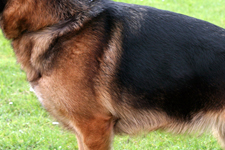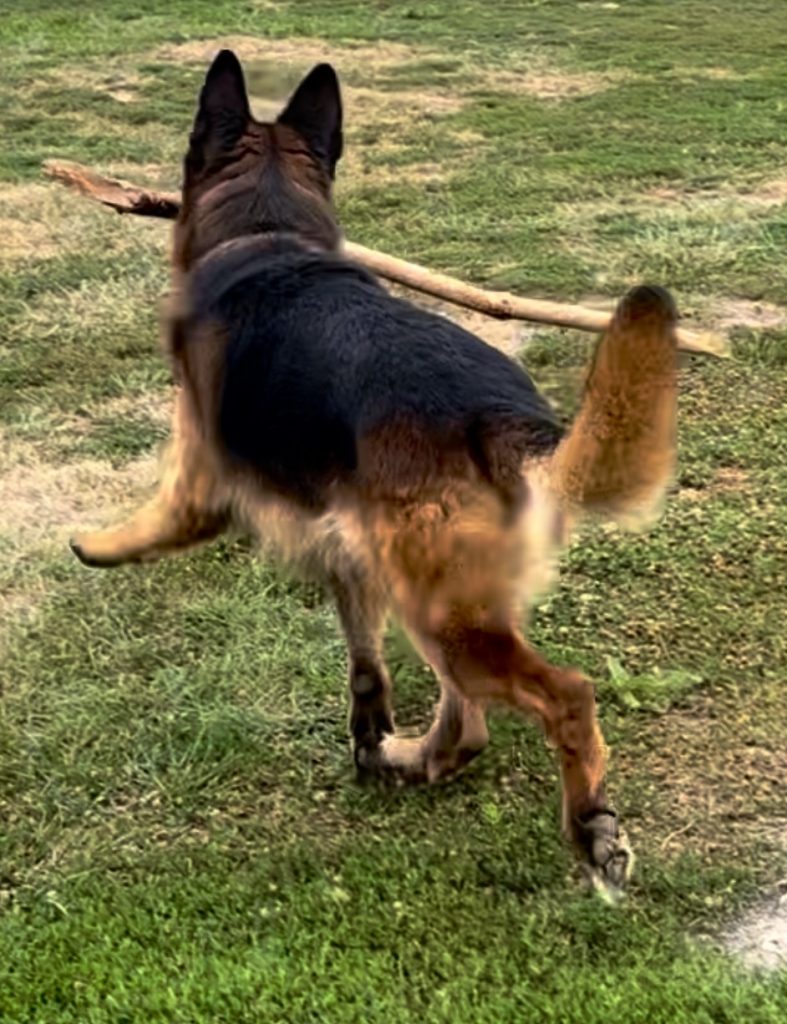German Shepherd Dog
Breed Standard
FCI-Standard-No. 166/23.12.2010/E
German Shepherd Dog
Origin: Germany/23.12.2010
FCI classification: Group 1 – herding dogs and cattle dogs
Section 1 – herding dogs with working trial
Use: Versatile Working, Herding and Service Dog
Brief Historical Overview
According to the official documentation of the Verein für Deutsche Schäferhunde (SV) e.V. (Society for the German Shepherd Dog, “SV” for short) – legal domicile in Augsburg, Germany, member of the Verband für das Deutsche Hundewesen (VDH, German Kennel Club) – the “SV” as the founding club of the breed is responsible for the breed standard of the German Shepherd Dog. Established in the first General Meeting at Frankfurt/Main on the 20th of September 1899 according to suggestions by A. Meyer and Max von Stephanitz and in addition to the amendments of the 6th General Meeting on the 28th of July 1901, the 23rd General Meeting at Cologne/Rhineland on the 17th of September 1909
the Executive Board & Advisory Board Meeting at Wiesbaden on the 5th of September 1930 and the Breeding Committee & Executive Board Meeting on 25 March 1961, revisions were resolved within the framework of the World Union of German Shepherd Dog Clubs (WUSV) Meeting on 30 August 1976. Revisions and cataloged measures were resolved with the Enabling Resolution through the Executive Board and Advisory Board from 23/24 March 1991, amended through the Federal Conventions from the 25th of May 1997 and the 31st of May/1 June 2008.
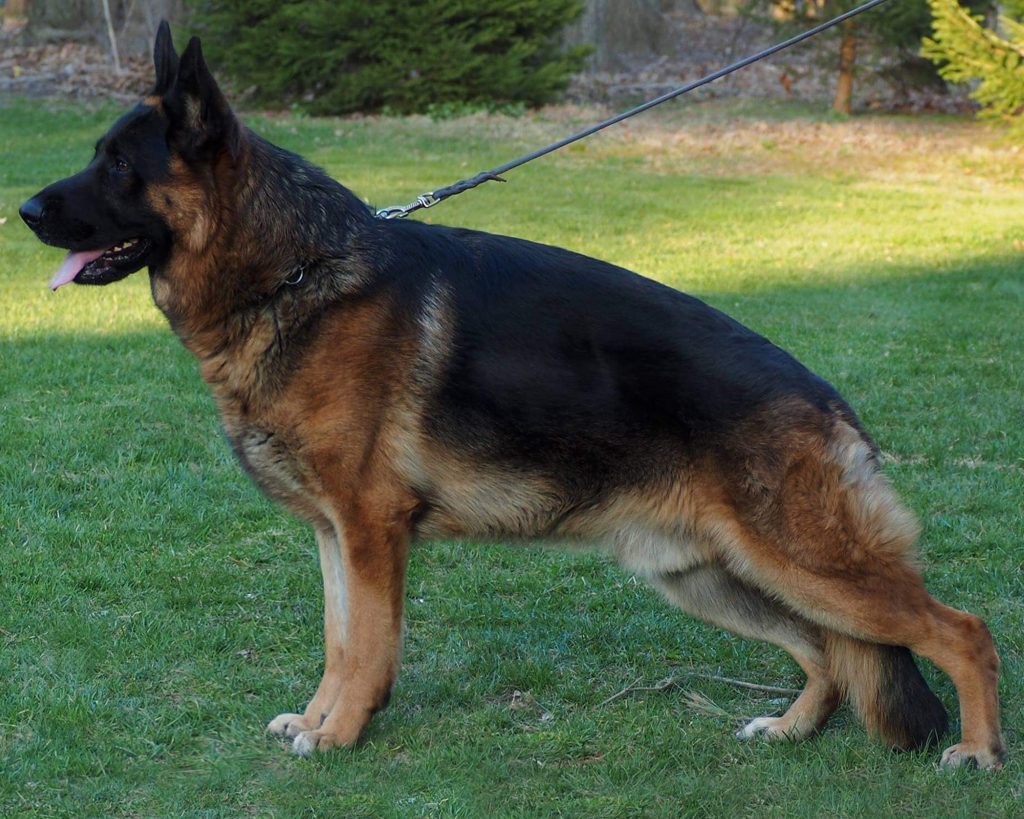
German Shepherd Dog: Male
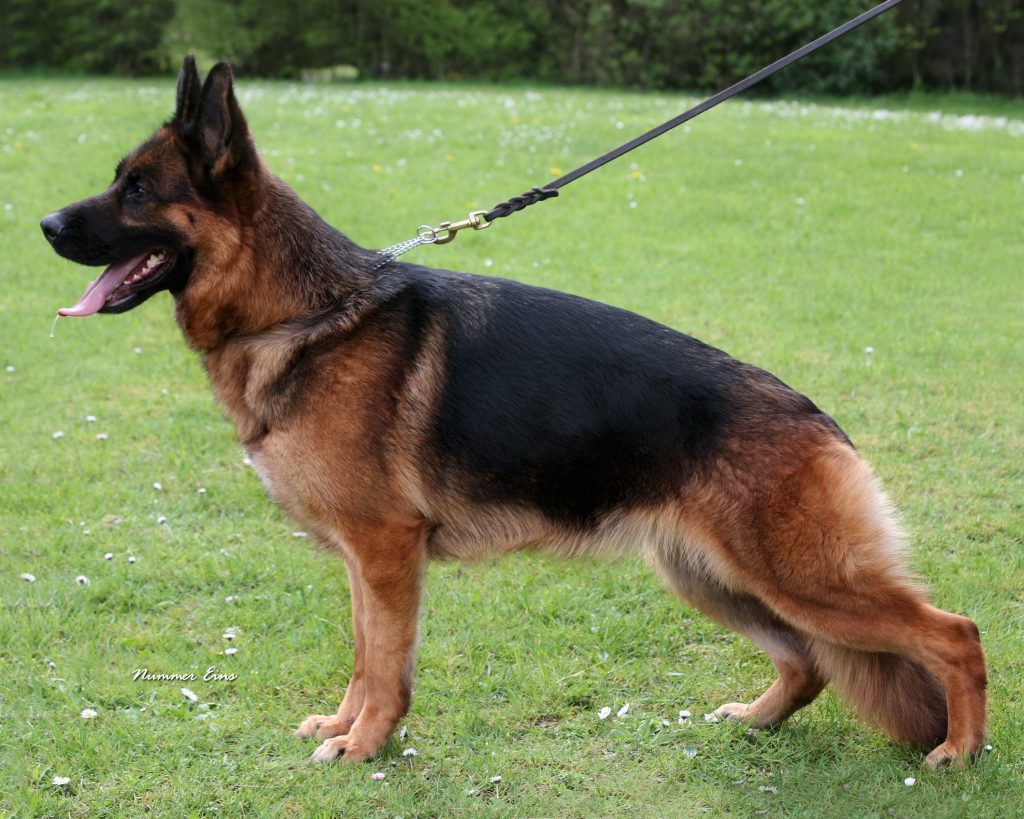
German Shepherd Dog: Female
The differentiation between the two sexes must be obvious at first glance, males distinctly masculine, and females distinctly feminine.
General
Appearance
The German Shepherd Dog is medium size, slightly elongated, powerful and well muscled, with dry bone and firm overall structure with clear distinction between the sexes.
Character
The German Shepherd Dog must be well-balanced (with strong nerves) in terms of character, self-assured, absolutely natural and (except for a stimulated situation) good-natured as well as attentive and willing to please. He must possess instinctive behavior, resilience and self-assurance in order to be suitable as a companion, guard, protection, service and herding dog.
Dimentional Ratios
The height at the withers amounts to 60 cm to 65 cm for male dogs and 55 cm to 60 cm for female dogs. The trunk length exceeds the dimension at the height at the withers by about 10 – 17 %.
The Head
The head is wedge-shaped, and in proportion to the body size (length about 40 % at the height at the withers), without being plump or too elongated, dry in the overall appearance and moderately broad between the ears. Seen from the front and side, the forehead is only slightly arched and without any or with only a slightly indicated middle furrow.

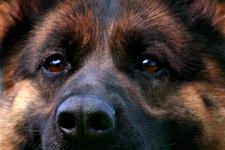
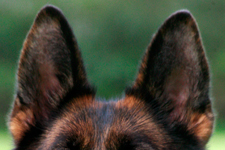
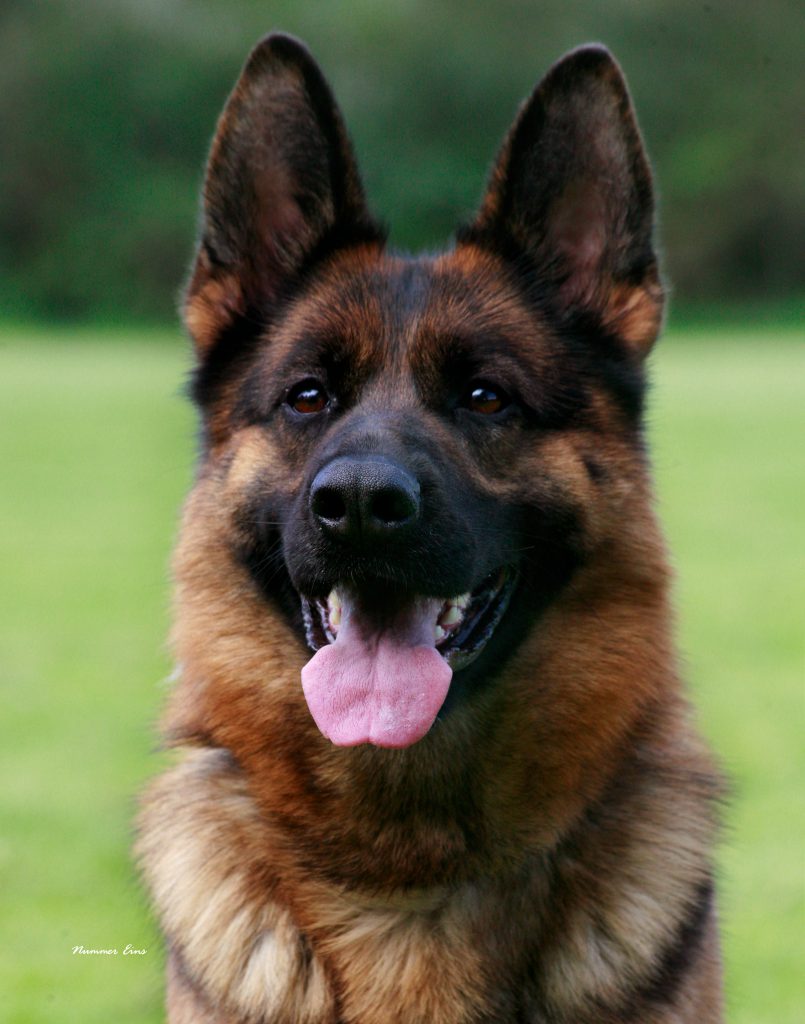
The ratio from the cranial region to the facial region is 50 % to 50 %. The width of the cranial region more or less corresponds to the length of the cranial region. The cranial region (seen from above) tapers evenly towards the nasal bridge with gradually sloping, not sharply depicted stop in the wedge-shaped facial region (foreface) of the head. Upper and lower jaws are powerfully developed.
The nasal dorsum is straight, any dip or bulge is undesirable. The lips are taut, close well and are of dark coloring. The nose must be black
EYES: medium size, almond-shaped, slightly slanted and not protruding. The color of the eyes should be as dark as possible. Light, piercing eyes are undesirable since they impair the dog’s impression.
EARS: The German Shepherd Dog has erect ears of medium size, which are carried upright and aligned (not drawn-in laterally); they are pointed and with the auricle facing forward. Tipped ears and drooping ears are faulty. Ears carried rearward when moving or in relaxed position are not faulty.
BODY
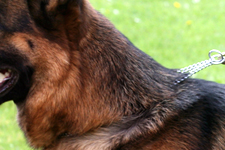
NECK
The neck should be strong, well-muscled and without loose neck skin (dewlap). The angulation towards the trunk (horizontal) amounts to approx. 45 %.
The UPPER LINE runs from the base of the neck via the high, long withers and via the straight back towards the slightly sloping croup, without visible interruption. The back is moderately long, firm, strong and well-muscled. The loin is broad, short, strongly developed and well-muscled. The croup should be long and slightly sloping (approx 23° to the horizontal) and the upper line should merge into the base of the tail without interruption.
The CHEST should be moderately broad, the lower chest as long and pronounced as possible. The depth of the chest should amount to approx. 45 % to 48 % of the height at the withers.
The RIBS should feature a moderate curvature; a barrel-shaped chest is just as faulty as flat ribs.
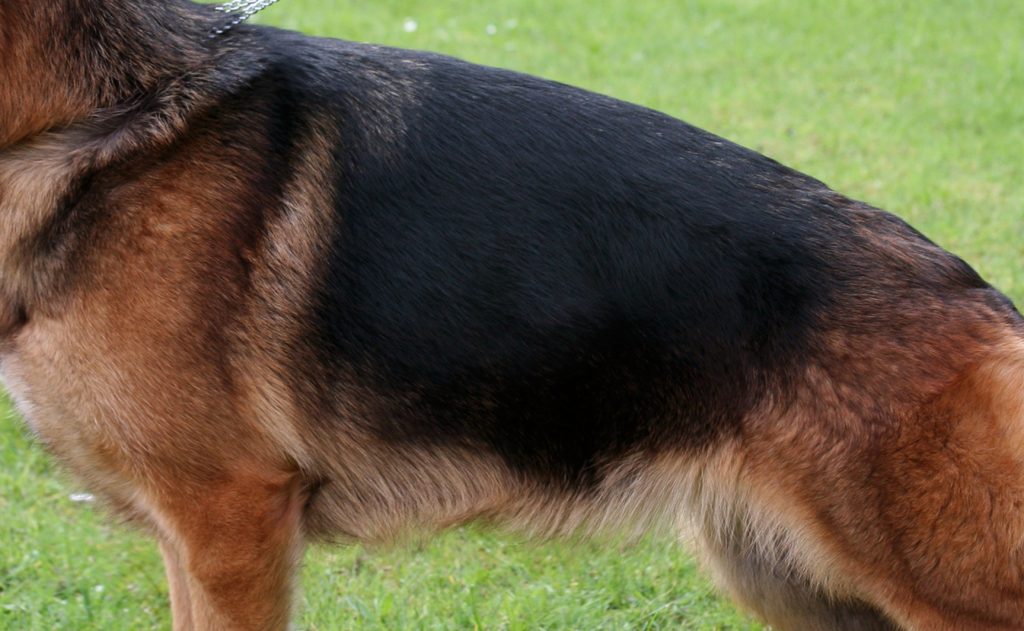
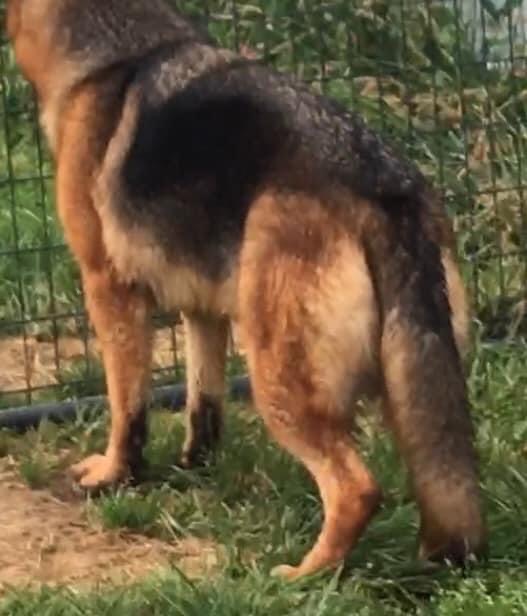
The tail extends at least to the hock, but not beyond the middle of the hind pastern. It has slightly longer hair on the underside and is carried hanging downward in a gentle curve, whereby in a state of excitement and in motion it is raised and carried higher, but not beyond the horizontal. Operative corrections are forbidden.
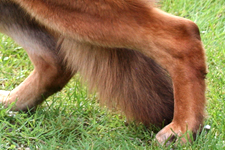
FOREQUARTERS
The forelimbs are straight when seen from all sides, and absolutely parallel when seen from the front.
Shoulder blade and upper arm are of equal length, and firmly attached to the trunk by means of powerful musculature. The angulation from shoulder blade and upper arm is ideally 90°, but generally up to 110°.
